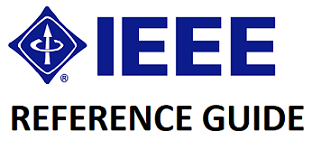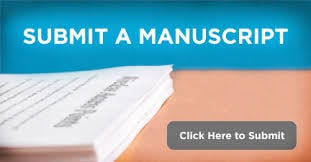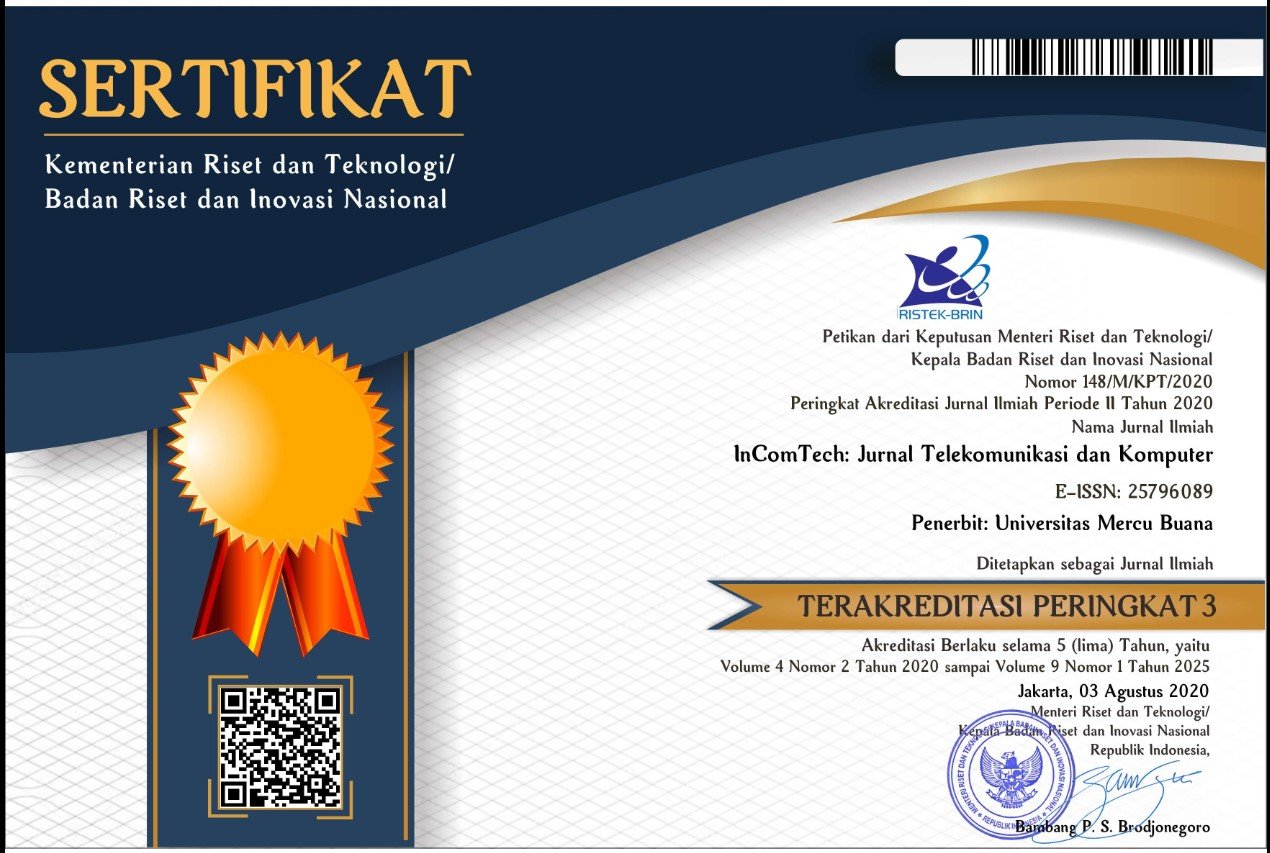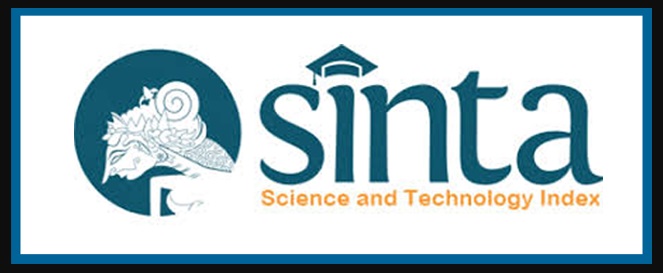Evaluation of the Implementation of Augmented Reality on Vegetable Objects Using Marker-Based Tracking and SUS
Abstract
With the rapid development of technology in the field of information media, which initially received information from mass media, schools, electronic media and the development of Augmented Reality technology that can be applied to the field of information. Augmented Reality is the incorporation of two-dimensional virtual objects into a real environment. AR has many benefits in the field of entertainment and others. The purpose of this study is to implement information media in the form of augmented reality with a Marker-based tracking approach on leaf vegetable objects using markers in the form of paper and can display information in virtual objects, namely the content and benefits, processing of vegetables that appear as objects, producing markers that can be detected with several tests of distance, light, and marker resistance. At a distance of 10 cm – 50 cm the marker can be detected using both smartphones (Vivo and Samsung), but at a distance of 100 cm samsung smartphones are no longer able to detect due to camera differences. Marker light testing can be detected at 5 – 200 Lux light but in >1 lux marker cannot be detected and displays objects. The usability test uses the System Usability Scale (SUS) method which results in a final score of 71,583 which means that the system that has been developed is already feasible to give to users.
Keywords
Full Text:
PDFReferences
M. R. Waluyo, Nurfajriah, F. R. I. Mariati, and Q. A. H. H. Rohman, “Pemanfaatan Hidroponik Sebagai Sarana Pemanfaatan Lahan Terbatas Bagi Karang Taruna Desa Limo,” Ikraith-Abdimas, vol. 4, no. 1, pp. 61–64, 2021, [Online]. Available: https://journals.upi-yai.ac.id/index.php/IKRAITH-ABDIMAS/article/download/881/669.
A. Charina, R. Adriani, A. H. Sadeli, and Y. Deliana, “Penerapan Teknologi Informasi Dan Komunikasi Pada Agribisnis Sayuran Organik,” Agricore J. Agribisnis dan Sos. Ekon. Pertan. Unpad, vol. 2, no. 1, 2019, doi: 10.24198/agricore.v2i1.15074.
H. Hermina and P. S, “Gambaran Konsumsi Sayur dan Buah Penduduk Indonesia dalam Konteks Gizi Seimbang: Analisis Lanjut Survei Konsumsi Makanan Individu (SKMI) 2014,” Bul. Penelit. Kesehat., vol. 44, no. 3, pp. 4–10, 2016, doi: 10.22435/bpk.v44i3.5505.205-218.
N. V. D. Nay, J. A. M. Rattu, and H. Adam, “Hubungan antara Pengetahuan Dan Ketersediaan Buah dan Sayur Dengan Konsumsi Buah dan Sayur Pada Remaja Di Kolongan Atas Sonder Kabupaten Minahasa,” J. KESMAS, vol. 9, no. 5, pp. 56–63, 2020.
N. E. Saputra, K. D. Tania, and R. I. Heroza, “Penerapan Knowledge Management System (KMS) Menggunakan Teknik Knowledge Data Discovery (KDD) Pada PT PLN (Persero) WS2JB Rayon Kayu Agung,” J. Sist. Inf., vol. 8, no. 2, pp. 1038–1055, 2016.
J. N. Nyaboro, J. Park, D. Rashed, and A. Eltawil, “M-Tour : A Smart Design Tourism Application for a Destination Competitiveness by a Design Thinking Approach,” 2019.
G. Morales Méndez and F. del Cerro Velázquez, “Augmented Reality in Industry 4.0 Assistance and Training Areas: A Systematic Literature Review and Bibliometric Analysis,” Electron., vol. 13, no. 6, 2024, doi: 10.3390/electronics13061147.
Y. Dianrizkita, H. Seruni, and H. Agung, “Analisa Perbandingan Metode Marker Based Dan Markless Augmented Reality Pada Bangun Ruang,” J. Simantec, vol. 6, no. 3, pp. 121–128, 2018.
D. Kurniawan, Aristoteles, and M. Fathan, “Implementasi Teknologi Markerless Augmented Reality Berbasis Android untuk Mendeteksi dan Mengetahui Lokasi SPBU Terdekat di Kota Bandar Lampung,” J. Komputasi, vol. 3, no. 2, pp. 136–143, 2015.
U. D, D. F, and H. D., “APLIKASI PEMBELAJARAN HURUF KATAKANA MENGGUNAKAN METODE MARKER AUGMENTED REALITY BERBASIS ANDROID Devi,” Unikom, vol. 15, no. 2, pp. 139–154, 2020.
J. Pratama and S. Kom, “Perancangan Augmented Reality Dalam Media Pembelajaran Sistem Anatomi Tumbuhan Sekolah Dasar Berbasis Android,” J. Inf. Syst. Technol., vol. 02, no. 03, pp. 38–49, 2021.
I. Abdul Rohim and P. Jaya, “Perancangan Dan Pembuatan Media Pembelajaran Augmented Reality Pada Pengajaran Teknik Elektronika,” Voteteknika (Vocational Tek. Elektron. dan Inform., vol. 7, no. 3, p. 128, 2019, doi: 10.24036/voteteknika.v7i3.105366.
I. D. Saputra, “Analisis Implementasi Augmented Reality (Ar) Berbasis Marker-Based Tracking Sebagai Media Pembelajaran Hidroponik,” pp. i–62, 2019.
I. K. R. Arthana, I. M. A. Pradnyana, and G. R. Dantes, “Usability testing on website wadaya based on ISO 9241-11,” J. Phys. Conf. Ser., vol. 1165, no. 1, 2019, doi: 10.1088/1742-6596/1165/1/012012.
S. Supardianto and A. B. Tampubolon, “Penerapan UCD (User Centered Design) Pada Perancangan Sistem Informasi Manajemen Aset TI Berbasis Web di Bid TIK Kepolisian Daerah Kepulauan Riau,” J. Appl. Informatics Comput., vol. 4, no. 1, pp. 74–83, 2020, doi: 10.30871/jaic.v4i1.2108.
M. A. Nasirudin, M. F. M. Fudzee, N. Senan, C. S. C. Dalim, D. Witarsyah, and A. Erianda, “Systematic Literature Review on Augmented Reality with Persuasive System Design: Application and Design in Education and Learning,” Int. J. Informatics Vis., vol. 8, no. 2, pp. 862–873, 2024, doi: 10.62527/joiv.8.2.2702.
K. Das, T. de Paula Oliveira, and J. Newell, “Comparison of markerless and marker-based motion capture systems using 95% functional limits of agreement in a linear mixed-effects modelling framework,” Sci. Rep., vol. 13, no. 1, pp. 1–15, 2023, doi: 10.1038/s41598-023-49360-2.
M. Valizadeh, B. Ranjgar, A. Niccolai, H. Hosseini, S. Rezaee, and F. Hakimpour, “Indoor augmented reality (AR) pedestrian navigation for emergency evacuation based on BIM and GIS,” Heliyon, vol. 10, no. 12, p. e32852, 2024, doi: 10.1016/j.heliyon.2024.e32852.
M. Rifqy, R. Jati, W. Erika, and A. Amelia, “Usability Analysis in Paasaar . Com Application Using the System Usability Scale ( Sus ) Approach,” Int. J. Econ. Bus. Account. Res., vol. 6, no. 1, pp. 291–300, 2022.
J. Brooke, “SUS: A ‘Quick and Dirty’ Usability Scale,” Usability Eval. Ind., no. November 1995, pp. 207–212, 2020, doi: 10.1201/9781498710411-35.
DOI: http://dx.doi.org/10.22441/incomtech.v15i2.24770

This work is licensed under a Creative Commons Attribution-NonCommercial 4.0 International License.
Publisher Address:
Magister Teknik Elektro, Universitas Mercu Buana
Jl. Meruya Selatan 1, Jakarta 11650
Phone (021) 31935454/ 31934474
Fax (021) 31934474
Email: [email protected]
Website of Master Program in Electrical Engineering
http://mte.pasca.mercubuana.ac.id
pISSN: 2085-4811
eISSN: 2579-6089
Jurnal URL: http://publikasi.mercubuana.ac.id/index.php/Incomtech
Jurnal DOI: 10.22441/incomtech

Ciptaan disebarluaskan di bawah Lisensi Creative Commons Atribusi-NonKomersial 4.0 Internasional
The Journal is Indexed and Journal List Title by:













